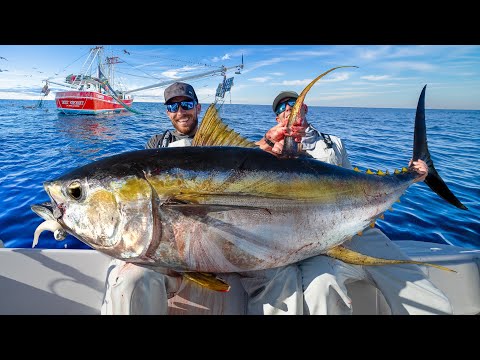Tuna, those sleek, muscular fish known for their incredible speed and agility, have long been prized for their culinary qualities and ecological significance. These fascinating creatures inhabit the vast oceans of the world, playing important roles in marine ecosystems.
Tuna Anatomy and Biology
Tuna belong to the family Scombridae, which also includes mackerel, bonito, and swordfish. They are characterized by their streamlined bodies, powerful muscles, and large, crescent-shaped tails. Tuna have a unique circulatory system that allows them to maintain high body temperatures, even in cold ocean waters. This adaptation enables them to swim long distances and at high speeds.
Tuna are highly migratory fish, traveling thousands of miles across the oceans. They form schools that can number in the millions, and their movements are influenced by factors such as temperature, food availability, and reproductive cycles.
Tuna Diversity
There are several species of tuna, each with its own unique characteristics:
- Bluefin tuna: This species is the largest of all tuna and is prized for its high-quality meat.
- Yellowfin tuna: Yellowfin tuna are smaller than bluefin tuna and are also highly valued for their meat.
- Skipjack tuna: Skipjack tuna are the smallest of the commercially important tuna species and are often used in canned tuna.
- Bigeye tuna: Bigeye tuna are large tuna with distinctive yellow eyes.
- Albacore tuna: Albacore tuna have a more elongated body than other tuna species and are often used in canned tuna.
Tuna in Human Culture
Tuna have been a valuable food source for humans for centuries. Their meat is rich in protein, omega-3 fatty acids, and other essential nutrients. Tuna is a popular ingredient in many cuisines around the world, enjoyed in dishes such as sushi, sashimi, tuna steak, and tuna salad.
In addition to their culinary importance, tuna have cultural significance in some societies. They are often associated with strength, speed, and power.
Tuna Conservation
Tuna populations have faced significant challenges in recent decades due to overfishing, bycatch, and habitat loss. Sustainable fishing practices are essential to ensure the long-term viability of tuna stocks.
Conservation efforts are focused on reducing overfishing, protecting tuna habitats, and promoting sustainable fishing practices. International agreements, such as the International Commission for the Conservation of Atlantic Tunas (ICCAT), play a crucial role in managing tuna fisheries.
Tuna are remarkable creatures that have captivated human imagination for centuries. By understanding their biology, ecology, and the challenges they face, we can appreciate their importance and support efforts to protect these valuable marine resources.
